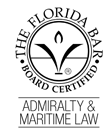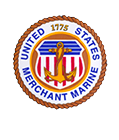Boston Based NCL Norwegian Dawn Cruise Ship Runs Aground
 How does a modern cruise ship run aground? That is what maritime investigators will be trying to sort out over the coming months in the case of Boston based Norwegian Dawn grounding on a charted reef off the Bermuda coast. The liner had just left King’s Wharf on Hamilton Island to start its last leg of its voyage back to Boston when it grounded. Though no reports have been made as to the exact number of people who were aboard, the Norwegian Dawn can carry more than 2,000 passengers and up to 1,059 crew members. What makes this grounding noteworthy is that this ship is not a rust bucket in its last stages of useful life owned by a nearly defunct shipping company. On the contrary, this cruise ship is equipped with sophisticated electronic navigational and steering equipment as well as depth recorders which sound warnings when entering dangerously shallow waters. Again, how does a modern cruise ship run aground?
How does a modern cruise ship run aground? That is what maritime investigators will be trying to sort out over the coming months in the case of Boston based Norwegian Dawn grounding on a charted reef off the Bermuda coast. The liner had just left King’s Wharf on Hamilton Island to start its last leg of its voyage back to Boston when it grounded. Though no reports have been made as to the exact number of people who were aboard, the Norwegian Dawn can carry more than 2,000 passengers and up to 1,059 crew members. What makes this grounding noteworthy is that this ship is not a rust bucket in its last stages of useful life owned by a nearly defunct shipping company. On the contrary, this cruise ship is equipped with sophisticated electronic navigational and steering equipment as well as depth recorders which sound warnings when entering dangerously shallow waters. Again, how does a modern cruise ship run aground?
Typically there are three reasons: environmental, equipment failure, and human error. NCL (Bahamas) Ltd., the ship’s operator which is based in Miami, blames the marine casualty on an equipment failure, more specifically, a malfunction of the steering system. The Norwegian Dawn is no stranger to equipment failures. In 2013, a power failure left the ship dead in the water for hours and in 2009 a power failure left the cruise liner without running water, air conditioning and working toilets. Though NCL blames the grounding on equipment failure, it fails to mention whether the navigational officers could have prevented the incident when they knew or should have known the steering system was not properly working. These issues will be investigated and a governmental report will follow.
More worrisome than the ship’s checkered past regarding power failure are the reports of how the crew reacted in the moments after the grounding. The Associated Press reports that passengers observed some “crew members running around in a panic”. This suggests a lack of training in emergency situations on the part of NCL. Lack of crew training was a significant contributing factor to the loss of life in the Costa Concordia disaster as several news outlets reported that the crew admitted they were not trained to evacuate passengers. It would stand to reason, that in the wake of such a maritime disaster as Costa Concordia, a major cruise line would conduct regular crew training for emergency situations.
Cruise lines owe their passengers the legal duty of reasonable care. This means performing periodic systems checks and emergency drills to determine whether the ship is sufficiently seaworthy to safely carry passengers and its officers and crew properly trained to act in a reasonable prudent manner when an emergency occurs. Time will tell if NCL met this legal standard.
Photo Credit: International Business Times












